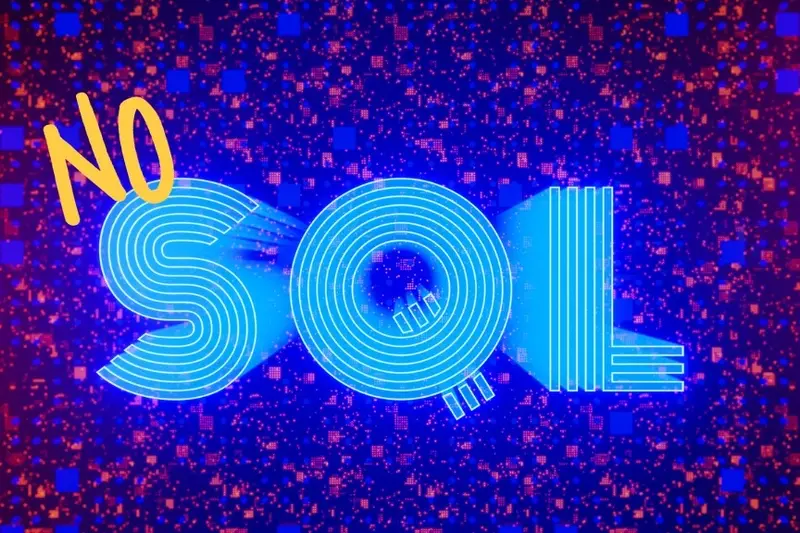What's the Difference Between Vibe Coding and AI-Assisted Programming?
The coding world has split into two distinct camps, and most developers don't even realise they're picking sides. On one side, you have programmers who treat AI tools like sophisticated autocomplete—asking for specific functions, debugging help, or code snippets. On the other, there's a growing movement of developers who chat with AI like they're brainstorming with a colleague, describing problems in plain English and letting the AI figure out the technical details.
This shift represents more than just different ways of using the same technology. We're looking at fundamentally different approaches to how code gets written, who writes it, and what skills matter most. Traditional AI-assisted programming still puts the developer firmly in the driver's seat—you know what you want to build and use AI to help build it faster. Vibe coding flips this relationship on its head.
The difference between asking AI to write a function versus describing what you want your app to do is like the difference between being a mechanic and being a car designer
After working with development teams who've adopted both approaches, I've seen how this choice affects everything from project timelines to team dynamics. The comparison between vibe coding vs AI-assisted traditional programming isn't just academic—it's reshaping how we think about software development itself.
What Is Vibe Coding?
Vibe coding is a newer approach to programming that's been gaining traction amongst developers who want to work more intuitively with AI tools. Rather than following strict rules or methodical processes, vibe coding lets programmers work with their instincts and creative flow when building software.
The concept is pretty straightforward—developers write code based on what feels right in the moment, using AI assistance in a more spontaneous way. They might ask an AI tool to help with a function, then modify it based on their gut feeling about what the code should do. There's no rigid planning or detailed specifications; it's more about experimenting and seeing what works.
Key Characteristics of Vibe Coding
- Quick prototyping without detailed planning
- Flexible interaction with AI coding assistants
- Emphasis on creative problem-solving
- Less formal documentation and structure
- Iterative development based on immediate feedback
From my experience working with different development teams, I've noticed that vibe coding appeals to programmers who find traditional methodologies too restrictive. It's particularly popular for proof-of-concept projects and creative coding challenges where the end goal isn't completely defined from the start.
The approach relies heavily on the developer's experience and intuition to guide the coding process, making it quite different from more structured programming methods.
Understanding Traditional AI-Assisted Programming
Traditional AI-assisted programming has been around for quite some time now—much longer than most people realise. When we talk about this approach, we're looking at tools that help developers write code faster and more accurately, but the human programmer still calls the shots.
Think of tools like GitHub Copilot, Tabnine, or even older systems like IntelliSense. These work by suggesting code completions, spotting errors before they become problems, and helping with repetitive tasks. The developer writes most of the code themselves, but the AI acts as a very clever assistant that knows millions of code patterns.
How Traditional AI Tools Work
Most traditional programming AI tools focus on specific tasks. They might suggest the next line of code based on what you've already written, or they'll flag up potential bugs. Some can even generate small code snippets when you describe what you want.
- Code completion and suggestions
- Error detection and debugging help
- Code refactoring assistance
- Documentation generation
- Testing support
The key thing here is that the programmer maintains full control. You decide what to build, how to structure it, and which suggestions to accept or reject. The AI doesn't make creative decisions about your project—it just helps you execute your vision more efficiently.
Traditional AI tools work best when you already understand what you're trying to build. They're brilliant at speeding up the mechanical parts of coding, but they won't design your app's architecture for you.
The Core Differences Between Both Approaches
After working with both approaches for quite some time now, I can tell you the differences are more significant than you might think. Traditional AI-assisted programming is like having a very clever assistant who helps you write code faster and catches your mistakes. You're still the one making the big decisions about what to build and how to build it.
Vibe coding flips this completely on its head. Instead of writing detailed instructions, you describe what you want your app to feel like or do in plain English. The AI then figures out how to make that happen without you needing to know the technical details.
Key Differences in Practice
- Traditional AI-assisted programming requires you to understand coding concepts and syntax
- Vibe coding lets you describe ideas in everyday language
- Traditional approaches give you more control over the final code
- Vibe coding produces results faster but with less precision
- Traditional methods are better for complex, custom features
- Vibe coding excels at creating standard app functionality quickly
The biggest difference I've noticed is that traditional AI-assisted programming still requires proper technical knowledge—you need to understand what good code looks like and how to structure an app properly. Vibe coding removes this barrier but at the cost of losing some control over the final product.
How Each Method Handles Code Creation
When it comes to actually writing code, these two approaches couldn't be more different. Traditional AI-assisted programming works like having a very clever assistant who knows loads about coding but still needs clear instructions. You write specific prompts, ask for particular functions, and the AI gives you back structured code that you can review, modify, and implement. It's methodical and predictable—you know what you're getting.
The Traditional Approach
With traditional programming using AI tools, developers typically break down their problems into smaller chunks. They might ask the AI to create a login function, then a database connection, then error handling. Each piece gets generated separately, tested, and integrated. The developer stays in control of the overall architecture and design decisions.
Vibe Coding's Creative Process
Vibe coding flips this completely on its head. Instead of asking for specific functions, you describe the feeling or experience you want. The AI interprets these abstract concepts and generates code that captures that essence. It's more experimental and can produce surprising results—sometimes brilliantly creative, sometimes completely off the mark.
The beauty of vibe coding is that it can create solutions you never would have thought of, but the challenge is that it might create solutions you never wanted
Both methods create working code, but they get there through completely different journeys. Traditional AI-assisted programming gives you control and predictability; vibe coding offers creativity and spontaneity. The choice depends on what matters more for your project.
Speed and Efficiency Comparison
When we're talking about getting things done quickly, vibe coding and traditional AI-assisted programming work at completely different speeds—and I mean that in ways you might not expect.
Vibe coding feels incredibly fast when you're in the zone. You're writing code almost as quickly as you can think, letting the AI handle the boring syntax whilst you focus on the creative problem-solving. But here's the catch: you'll often find yourself going back to fix things that didn't quite work out the first time. It's like sketching with a pencil—quick initial strokes, but you need to refine and correct as you go.
Where Each Method Shines
Traditional AI-assisted programming takes longer upfront because you're being more deliberate about your approach. You're planning, structuring, and being methodical. The payoff comes later when your code works correctly the first time and requires fewer fixes.
- Vibe coding: Lightning-fast initial development, moderate debugging time
- Traditional AI-assisted: Slower initial development, minimal debugging time
- Vibe coding: Great for prototypes and experimentation
- Traditional approach: Better for production-ready code
From my experience building apps over the years, the "faster" method really depends on your project timeline and quality requirements.
Learning Curves and Skill Requirements
Right, let's talk about what you actually need to know to get started with these different coding approaches. I've worked with app developers at all levels over the years, and the skill requirements between vibe coding and traditional AI-assisted programming are quite different.
With traditional AI-assisted programming, you need a solid foundation in programming fundamentals. You can't just ask GitHub Copilot to write code if you don't understand what good code looks like—it's like having a brilliant assistant who speaks a language you don't understand. You need to grasp concepts like data structures, algorithms, and debugging techniques. The learning curve is steeper, but once you're there, you're really there.
Start with traditional programming concepts before jumping into vibe coding. You'll spot problems faster and write better prompts when you understand the fundamentals.
Skill Requirements Breakdown
- Traditional approach: Strong programming fundamentals, debugging skills, code architecture knowledge
- Vibe coding: Natural language skills, prompt engineering, basic programming concepts
- Both methods: Problem-solving abilities, testing mindset, version control basics
Vibe coding has a gentler learning curve. You can get started with basic programming knowledge and strong communication skills. The tricky bit is learning how to "speak" to AI tools effectively. It's not about knowing syntax—it's about describing what you want clearly and understanding when the AI gets it wrong.
Conclusion
After working with countless development teams over the years, I've seen how different coding approaches can make or break a project. Vibe coding and traditional AI-assisted programming aren't competing methods—they're different tools for different jobs. Think of it like choosing between a paintbrush and a spray gun; both create art, but the process and results vary dramatically.
Vibe coding shines when you need creative solutions and don't mind the experimental nature of the process. It's brilliant for exploring new ideas and pushing boundaries, though you'll need patience and solid debugging skills. Traditional AI-assisted programming, on the other hand, gives you reliable, structured help that speeds up routine tasks whilst keeping you firmly in control.
The choice between them depends on your project needs, timeline, and personal working style. Some developers thrive on the creative chaos of vibe coding; others prefer the predictable support of traditional AI tools. Many successful teams use both approaches—vibe coding for brainstorming and prototyping, traditional AI assistance for production code. The key is understanding what each method brings to the table and matching it to your specific situation.
Share this
Subscribe To Our Learning Centre
You May Also Like
These Related Guides

What's The Battery Impact Of My App On Wearable Devices?
What's A Bug Tracking System And Why Do I Need One?



